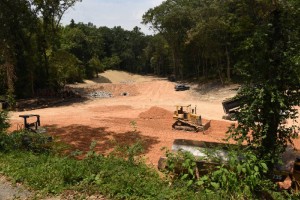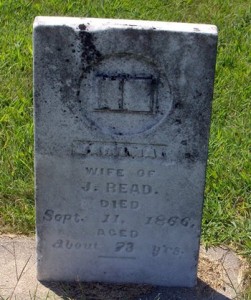Each artifact holds its own story. Our issue is, the artifact cannot directly share it like a living person or document can, it is only shared through clues that were left behind. These clues are hidden within in its structure, fragmented or whole, and hidden in the artifact’s surroundings. Archaeologists are the storytellers of artifacts, piecing together the clues left for them to find. It is their job to interpret these clues correctly, for it can be fatal to interpret a piece of history incorrectly. The story is the key to its society’s culture and how we can understand it. False interpretations lead to false analogies. Many techniques are used to avoid this from happening.
Throughout history, stories have been told through the graves of others. It is can tell us through gravestone inscriptions- the relation the deceased had with others and the impact they had, depending on how long they lived and where the grave is placed. The deceased leave behind clues of their life and of their society in ways that an average person may not spot. For example, a woman’s grave could give away- if they were considered a possession of their husband by being referenced as “wife of (insert-name-here),” even after death. Besides individual gravestones, the cemetery as a whole can be its own story.
One story brings us to North Chattanooga, TN. About a month ago, August 2015, contractors uncovered (about) century-old graves. In this town, it had been common knowledge that there was an old black cemetery in the area, but Beck Knob Cemetery was thought to be in the woods. Town maps had falsely marked that all graves had been in the woods after finding a few graves there. Thinking it was safe, they gave permission for a nearby construction site on Dartmouth Street to be developed to cut a drainage ditch. Mid- construction, the graves were uncovered.

The construction site where the graves had been disturbed, on Dartmouth Street in North Chattanooga, TN.
They had reached a lower layer of soil, which had been concealed for about a hundred years. While many of these graves had been unmarked in this uncovered territory, one grave amongst them, held a date of death- July of 1920. This information confirmed the new idea of this territory being the actual cemetery or a possible extension of the one in the woods, whose dates range from the 1890s to the 1940s.
False interpretations and recordings can be fatal to history, as shown in the error in the town’s map. By the time the contractors realized it was a cemetery, the burial site was already disturbed and dozens upon dozens of unmarked graves could have already been destroyed. As a result, stories that had been left untold will forever remain untold.
Further Reading:
Similar uncovering of cemeteries/gravestones:
http://www.theguardian.com/science/2015/apr/01/medieval-hospital-cemetery-poor-scholars-found-under-cambridge-university
http://www.theguardian.com/science/2013/mar/15/black-death-victims-city-london
http://www.cnn.com/2015/02/26/travel/feat-rare-roman-headstone-england/
Sources:
http://www.timesfreepress.com/news/local/story/2015/aug/11/development-halted-after-old-cemetery-uncover/319219/ (Content, Image of Map, and Image of Construction Site)
http://www.historicrockcastle.com/Blog/October_2013/Cemetery_Tip__Dates_upon_a_Tombstone (Content and Image of Gravestone)



One archaeological technique that is used to prevent false interpretations of a culture and history is to enlist the help of local community members who wish to assist archaeologists during an excavation. Their knowledge of a community’s history and witness of changes in its society is essential for an archaeologist when trying to understand the contextual value of an artifact. This technique is inclusive especially concerning indigenous sites. The location of this cemetery is particularly interesting because it shows what was considered an acceptable location to bury specific groups of people during that time. It speaks to the treatment of a people by the rest of the community and larger society. The lack of accurate historical records suggests the unimportance of the cemetery to the community. Small clues such as these are essential for archaeologists when interpreting the past and challenging current beliefs.
This story reminds me of another cemetery that was discovered in a park in the Bronx this year. More info here:
http://www.nydailynews.com/new-york/bronx/bronx-school-discovers-slave-cemetery-article-1.1353223
Our culture treats maps as accurate documents but I teach an entire course on how maps only show us what the map maker wanted us to see. They are often misleading and occasionally just plain wrong. Archaeology has its own biases but when we use multiple techniques and ways of knowing we get to some universal truths.
Archaeologists recognize the bias of those who have interpreted the past and weed out the opinions that people had discreetly publicized as facts over time. Disproved assumptions made in history have yet to be corrected completely. As mentioned in class, decolonizing the past is something that is still worked on. Although it is terrible that history had been written with a bias, the bias itself tells about the views of people recording history.
Related information: http://www.nytimes.com/2015/10/06/world/europe/scientists-hope-to-learn-how-pompeians-lived-before-the-big-day.html